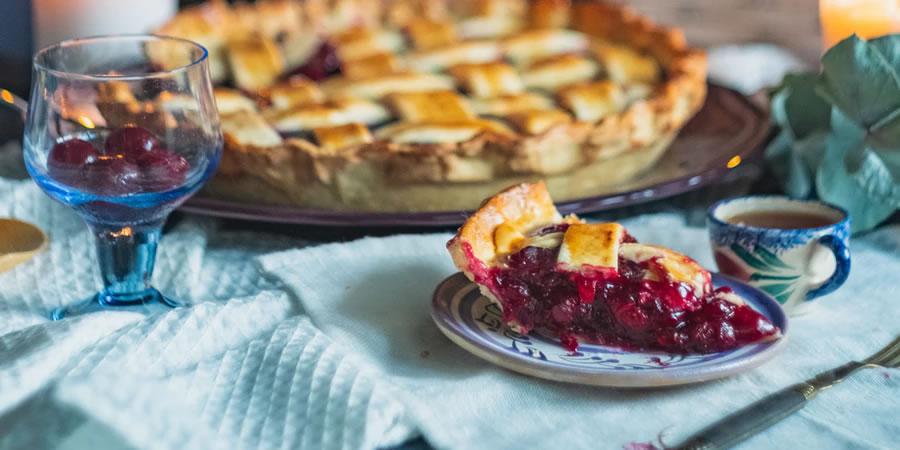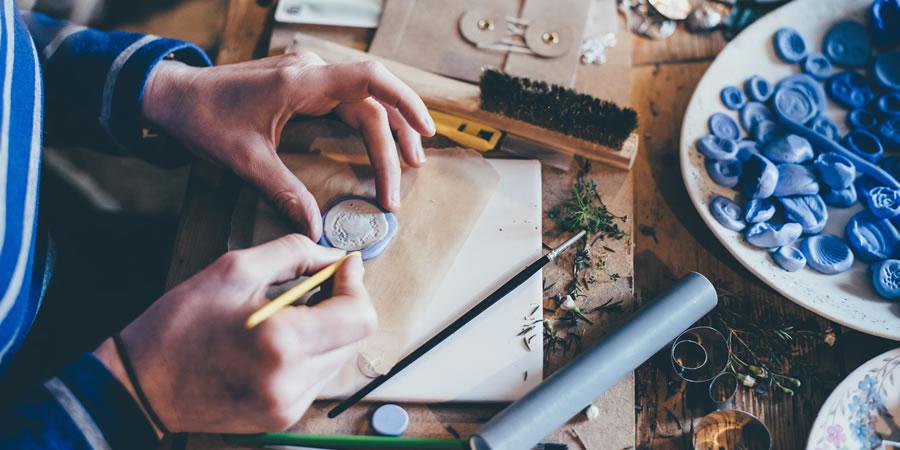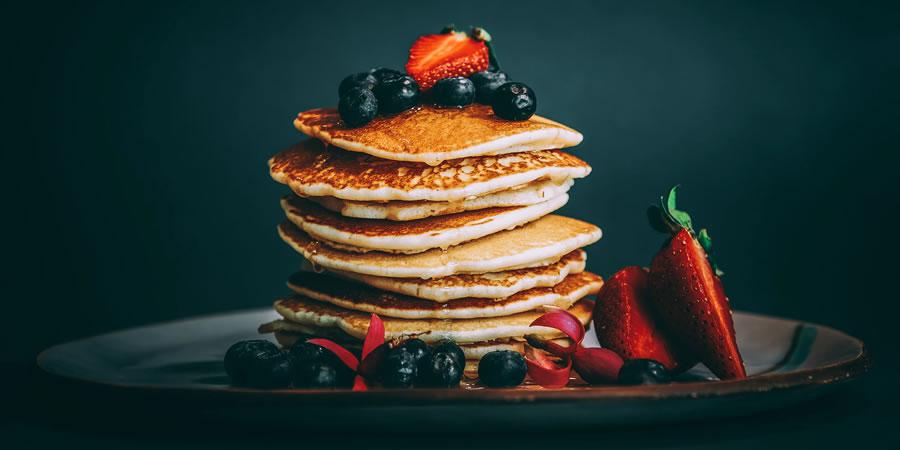I have a confession to make. I’m not actually a pastry chef. But I did work in a professional kitchen once upon a time, and baking is one of my favorite hobbies. I just love the awesome sights, sounds, and smells of a kitchen full of baking goods. The brilliant red of cherry pie filling, the magical crackle of pastry crust, the heavenly aroma of cinnamon and pumpkin pie spices…
Sigh.
I’m sorry, what were we talking about? Oh, right. Regardless of whether you bake or not, you can use a lot of the same knowledge pastry chefs and bakers draw upon every day to improve your design work. How can you do this, you ask? Well, sit back, dear reader, and I’ll tell you!

Thing ?1: Use your hands
The most important tool of any pastry chef are his or her hands. They’re what allow him or her to mold and shape dough, fruit, sugar, whipped cream, and other ingredients into scrumptious confections enjoyed by customers and appreciative friends.
I’m going to go out on a limb here and assume that you, as a designer, have a pair of hands of your own. Step away from the computer screen from time to time, and put those babies to use! I find that when I’m stuck on a design challenge that’s requiring a lot of Photoshop or Illustrator-hours, the best solution is to get up, step back, and hit the craft supplies.
That’s right – break out the colored paper, scissors, glue, and have at it. Recreate your design idea as a crude arts and crafts project, similar to what you might have done in elementary school. Go back to your sketches, if you have any. If you don’t have any sketches… well now’s the time to make some!
If you’re not the cut-and-paste type, try other methods. Clay, sewing or needlework, or hey – even baking! You’d be surprised how inspiring a freshly baked plate of cookies can be. Or maybe you already know this and aren’t surprised at all.

Thing ?2: Create, test, and evaluate
Do you know how many times I had to bake my famous lemon scones before I finally perfected the recipe? Let’s just say my friends were eating a lot of lemon scones at one point.
In an industry that relies on creating that perfect, flavorful bite over and over and over again, it’s vital to “lather, rinse, and repeat,” testing and evaluating your work with a critical eye and narrowing the entire process down to an exact science.
You probably don’t want to get too narrow and caged-in with the creative part of your work as a designer, but there’s a lot of your process that can, over time, be improved and executed without error. Like that perfect dollop of frosting on top of a cupcake.
Thing ?3: Get the good stuff
The very best and most innovate pastry chefs (and home bakers) procure the freshest and finest ingredients they can afford from local vendors such as farmers’ markets and local growers’ co-ops.
If you’re serious about your career as a designer, particularly a freelance designer, there’s no excuse for you not to have the best tools and resources at your disposal. Everything from your software and hardware to your printer should be hand-selected to help you work at your 100% best all the time.
Anything less is just…unsavory.

Thing ?4: Impart your knowledge
Many chefs in the professional culinary arena have at least a couple of students to whom they’ve given lessons, tips, advice, or criticism in some way, shape, or form. Teaching is the best way to continue learning – it keeps you on your toes and allows you to have a vital connection with the up and coming world of creative professionals. And before you ask: no, you certainly don’t have to be an established professor at a college or university to teach.
There’s no reason you can’t take a student or two under your wing while you’re still learning your craft. As I said, teaching is the best way to keep learning, and I personally have never learned so much as when I’ve taught others.
Give back to the community and gain more than you ever dreamed you could in knowledge, connections, and good karma.
Thing ?5: Cross-pollinate ideas
In a professional fine dining kitchen, chefs in all the different departments (hot foods, cold foods, pastries, etc.) must work together to create a culinary experience that will make customers want to come back again and again. They must discuss meal plans and recipe combinations with the head chef and/or the restaurant management, and rely on their wits and creativity to make sure the meal breaks the mold of “normal” or “boring.”
As a freelance designer, you may not have the opportunity to consort and collaborate with other designers on too many of your projects. Nevertheless, it’s important to get at least occasional feedback and input from others that you can use to adjust your creative process and stay on top of the heap. Of course you should make friends with designers, if you haven’t already, but don’t leave out other creative professionals in adjacent industries.
Do you use a lot of photography or illustration in your assignments? Find a photographer or illustrator and talk shop to learn the finer points of how they produce their work. Printers are especially great people to have in your social network, even if you’re not a print designer. I could write a whole article on why there needs to be more communication between web and print designers (and I probably will), but for now I’ll just say: it’s much more important than you think.

Thing ?6: Keep it clean
Neat freaks, feel free to skip over this one. But if you’re one of “those” designers (you know. The ones with candy bar wrappers and empty Red Bull cans littering their desks and floors of their offices), then you should probably listen up. Being a chef in a professional environment comes with its own built-in motivation for cleanliness: sanitation laws.
You just can’t be a slob in the kitchen and expect to stay in business for long. Sooner or later, those bad habits are going to catch up with you and people will find out what a Messy Bessie you are. And then you’ll get fined and possibly sued, which, from what I hear, isn’t much fun at all.
Designers can technically “get away” with being more lax about their cleaning habits, because the end product is generally unrelated to the surrounding environment in which it’s produced. But it’s a well-known fact that artists, designers, and even corporate office workers are significantly more creative when they work in cleaner surroundings.
So, clean up that mess. Your right brain will thank you.
Thing ?7: An assistant from the audience
Obviously, the most successful and highest-paid chefs have assistants to help them prepare ingredients and handle the tedious jobs of doing things that don’t require a lot of skill (like, say, coring apples or dicing peaches), but you may be surprised to learn that even lower-level chefs and cooks outsource a lot of their prep work to other cooks, assistants, and even different departments. In a larger restaurant, for example, there may be an entire department devoted to removing the skins and pits of fruits and vegetables.
As a freelance designer working today, it’s easier than ever to outsource necessary but time-consuming tasks that you may not have the interest or skill level to do yourself. I’ll tell you that the first time I outsourced a difficult bit of coding work to a professional programmer, I was completely hooked.
Yes, there’s a certain sense of pride and accomplishment that comes with doing something yourself, but if you’re feeling pressured to meet deadlines on your own and your client base is swelling to higher numbers than you can handle alone, there’s definitely no shame in hiring someone to share the load. Besides, you’ll free up more time to focus on whichever aspect of your work is the most interesting to you. Sweet!

Thing ?8: Learning is hard work
Obviously, since you’re here reading this article, I don’t need to tell you that educating yourself is a vital part of your development not just as a working designer, but as a creative person in general. But you shouldn’t just be learning things in your off hours. Pastry chefs are constantly discovering new ingredients and flavor combinations on the job. If something accidental turns out to be a success, it may just become the new house specialty in the kitchen.
Learn from your mistakes, and see if you can’t turn them from outright failures to “happy accidents.” Learn the art of repurposing things you think won’t work; examine them from different angles and find the kernel of brilliance hidden just under the surface.
Then again, sometimes things just plain…um…suck, and it’s good to know when to stop working on something as well. Refer back to #5 and get feedback from your friends and colleagues to help you figure out where the line should be drawn.
Thing ?9: Support the local industry
The culinary industry isn’t just chefs and cooks slicing and dicing it up in a restaurant. It’s also the farmers who grow the produce and raise the livestock; it’s the vendors who sell it fresh at wholesale prices; it’s the food critics and bloggers who rave about the newest delectable creations coming out of the kitchen. Support for the local surrounding industry is something that’s beaten into the heads of aspiring cooks in culinary school, and it’s an important thing for designers to consider as well.
Find out who’s working in the printing, manufacturing, bookbinding, and other industries in your immediate area. If you need to outsource some part of your design project, consider looking locally first, and building relationships with small business professionals in your area.
Also, this might be sacrilegious to some more financially driven designers, but try to find ways to support your clients as well. If you’re lucky to get a job from an awesome small business or individual, don’t be afraid to spread the word. Try out the product or service they’re offering – if you like it, let people know (in, you know, a non-obnoxious way, of course).
In today’s economy, we all need to help one another to succeed. For designers, that means building up the industry around you and doing what you can to nurture it.

Thing ?10: Be awesome!
I probably don’t have to tell you this, but I will anyway. Everyone, no matter what industry they’re in, should strive to produce the best work they possibly can – every single day. I say this a lot, but if you don’t put your best foot forward for the little things, you’ll never be truly successful at the big things.
It’s one thing to get lazy for Aunt Millie’s dog grooming website; quite another to drop the ball on a branding assignment for a multinational corporation or a celebrity client.
If you get into the habit of slacking off, you’ll have a harder time keeping up the pace when your clients get more and more significant.
The post 10 Things Designers Can Learn From Pastry Chefs appeared first on Speckyboy Design Magazine.